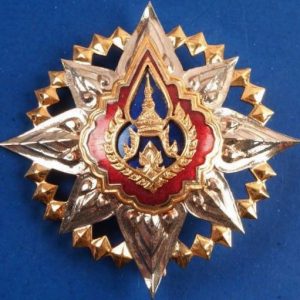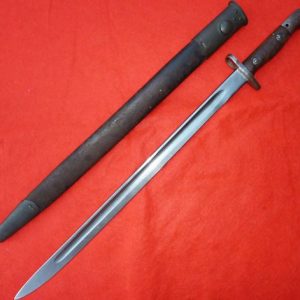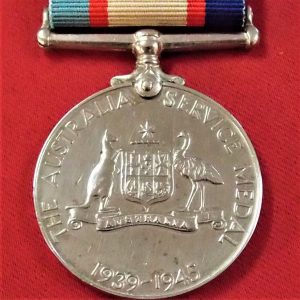SOLD
WW1 1917 BATTLE FOR ARRAS MILITARY MEDAL TO PRIVATE W.HAZLETON 8TH Bn R FUS.
Military Medal, (G.V.R.) impressed named 754 PTE. W.HAZLETON. 8/R. FUS. Comes with medal index card, medal rolls, London Gazette 18/6/1917, 1911 census, pension papers and basic research. Military Medal gazetted: London Gazette 18/6/1917. (This gazette covers the Battle of Arras 9th April -14th April as per The Great War Medal Collectors Companion by Howard Williams). William Hazleton was born on the 13/8/1893 at Fenton, Stoke on Trent. The 1911 census records him as living in Fenron Park and his occupation ‘Labourer in a brick yard’. He enlisted on the 20/8/1914 at Shelton, Stoke on Trent to the Royal Fusiliers and...
$595.00
SOLD
Military Medal, (G.V.R.) impressed named 754 PTE. W.HAZLETON. 8/R. FUS. Comes with medal index card, medal rolls, London Gazette 18/6/1917, 1911 census, pension papers and basic research.
Military Medal gazetted: London Gazette 18/6/1917. (This gazette covers the Battle of Arras 9th April -14th April as per The Great War Medal Collectors Companion by Howard Williams).
William Hazleton was born on the 13/8/1893 at Fenton, Stoke on Trent. The 1911 census records him as living in Fenron Park and his occupation ‘Labourer in a brick yard’. He enlisted on the 20/8/1914 at Shelton, Stoke on Trent to the Royal Fusiliers and was given the regimental number of 754. Probably with the 8th Battalion & being one of the original members when the battalion was raised.
He landed in France 1/6/1915 and served with the 8th Battalion until 30/1/1918 when he went on leave. Private Hazleton won his Military Medal whilst serving with the 8th Battalion Royal Fusiliers 9th April 1917. Whilst on leave he was posted to the 9th Battalion Royal Fusiliers 5/2/1918. Hospitalised with influenza 28/6/1918 – 19/8/1918, when he re-joined the 9th Battalion he served with them until he returned to England to be demobilised on the 16/1/1919. Also entitled to the 1914-15 Trio.
1939 census records his as living at 24 Warf St, Stoke on Trent with his occupation as ‘Fruit Hawker’. He died 1960 still living in Stoke on Trent.
8th (Service) Battalion Formed at Hounslow on 21 August 1914 as part of K1 and came under command of 36th Brigade, 12th (Eastern) Division. Landed in France in May 1915. Disbanded in France 6 February 1918.
9th (Service) Battalion Formed at Hounslow on 21 August 1914 as part of K1 and came under command of 36th Brigade, 12th (Eastern) Division. Landed in France in May 1915.
The Royal Fusiliers in the Great War by H.C.O’Neill:
Some of the battalions formed during the war were the direct product of the units already existing. The 8th and 9th, both service battalions, began in this way. A draft of one officer (Lieutenant T. G. Cope) and 100 O.R. left the depot on August 15th for Colchester in company with a similar draft under Lieutenant D. E. Estill to form the 8th and 9th Battalions respectively. The 8th was reinforced by a draft of at least 500 from the 5th Battalion, and on August 21st Lieut. -Colonel A. C. Annesley arrived to take over command. Both battalions, after a period of strenuous training at Colchester and Aldershot, left for France at the end of May, 1915.
Battle for Arras: On the Arras battle front there were a number of Fusilier battalions waiting to take their part in the struggle. Farthest north were the 8th and 9th Battalions (12th Division), just above the Arras-Cambrai road. The 8th and 9th Battalions reached their objectives, and with small loss took a considerable number of prisoners. The 8th was the left support battalion of the brigade, and the men moved off so rapidly after the barrage that in many cases they became merged in the assaulting battalion, the 7th Royal Sussex. The front German line was reached without a single casualty.
The attack went exactly according to programme. The enemy put up a resistance at two strong points, but they were outflanked, and at 10 a.m. the whole objective was taken with two machine guns and 129 prisoners. The total casualty list was 175 killed, wounded and missing (only 7 of these last). On the right, the 9th Battalion also gained all objectives and captured two machine guns and 220 prisoners. C Company captured 150 of these in one dug-out. But the dug-outs were unhealthy places. One of them, in the nth Middlesex area, was suddenly blown up by the explosion of a mine; and as a consequence German dug-outs were afterwards forbidden. These positions, the "Blue Line," were at once consolidated.
A good fighting MM with some peculiarity’s in his records. It would appear that his service records did not survive the ‘Blitz” in WW2. However information was gained from the pension papers collection. He has 2 medal index cards. His medal roll for the War and Victory record his time in the two battalions. From his papers it would appear that he only had one home leave of 11 days for his 2 ½ years in France.
| Weight | 1 kg |
|---|---|
| Dimensions | 30 × 20 × 20 cm |





